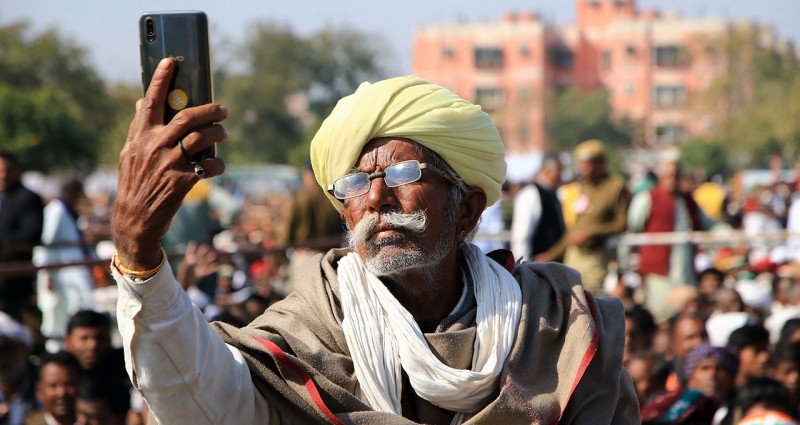
In this article, we will delve into the realm of mobile internet usage on a global scale. We'll explore the staggering numbers and the significant reasons why some individuals are yet to join the digital bandwagon. So, let's embark on this digital journey together.
The digital age has ushered in a remarkable transformation, where mobile internet has become an indispensable part of our lives. It's hard to ignore the fact that it has reshaped the way we communicate, work, and access information. With the touch of a screen, the world is at our fingertips.
To comprehend the sheer magnitude, it's crucial to grasp the number of mobile internet users worldwide. The numbers are staggering, and they continue to rise year by year.
Recent data from credible sources tells us that approximately 5.28 billion people, or a whopping 67.01% of the world's population, use mobile internet. It's a testament to the pervasive nature of this technology. More than two-thirds of the global populace is connected through their smartphones.
While it's evident that mobile internet is a global phenomenon, it's equally important to recognize that not everyone is on equal footing when it comes to mobile internet usage. There are significant regional differences in adoption, and these variations paint a more complex picture.
Unsurprisingly, Asia takes the lead with the highest number of mobile internet users, standing at over 2.8 billion people. The vast and diverse continent has embraced mobile technology as an integral part of daily life. From bustling metropolises to remote villages, the influence of mobile internet is pervasive.
Europe and North America, while not matching Asia's numbers, are still significant players in the global mobile internet scene. Europe boasts 21% of global mobile internet users, with North America following at 10%. These regions have well-established digital infrastructures and widespread connectivity, contributing to their substantial user base.
On the flip side, there are regions where mobile internet usage is less prevalent, primarily due to infrastructure challenges and economic disparities. In some parts of Africa and South America, limited access to stable internet connections and the high cost of smartphones hinder the adoption of mobile internet. This glaring digital divide is a reminder that not everyone enjoys the same level of access to the digital world.
The prevalence of mobile internet worldwide doesn't negate the fact that there are still individuals who remain disconnected from this digital revolution. Let's explore the reasons behind this phenomenon.
One of the most significant hurdles to mobile internet adoption is the cost. For many people, owning a smartphone and maintaining a mobile data plan can be prohibitively expensive. The initial investment in a smartphone, along with the recurring expenses of data plans, can strain the budgets of those living in economically disadvantaged situations.
Socioeconomic inequality often leads to limited access to mobile internet in certain areas. It's a harsh reality that not everyone has equal access to digital resources. This inequality stems from a combination of factors, including income disparities and the lack of digital infrastructure in certain regions. Bridging this gap is crucial for a more inclusive digital future.
While the cost is a significant barrier, it's not the only one. A significant portion of the global population lacks the necessary digital skills to navigate the online world effectively. Digital literacy gaps exist, and they hinder many from embracing mobile internet. Without the knowledge to utilize digital tools and platforms, individuals can feel overwhelmed and reluctant to adopt this technology.
In some cultures, there is resistance to the intrusion of technology into daily life. Traditional values and lifestyles are deeply ingrained, and the integration of mobile internet can be perceived as a threat to these established norms. This resistance can result in lower adoption rates, as some individuals and communities prefer to maintain their traditional way of life.
Fear of data privacy breaches and cyber threats dissuades some from using mobile internet. The digital world has its share of risks, and individuals who are not well-versed in online security may hesitate to embrace mobile internet for fear of exposing themselves to potential threats.
In conclusion, mobile internet usage has proliferated worldwide, with over 5.28 billion users. However, significant challenges remain, preventing some individuals from accessing this digital realm. The digital divide, fueled by economic constraints, digital literacy gaps, and cultural factors, underscores the need for more inclusive digital policies and initiatives. Bridging these gaps is essential to ensure that everyone can benefit from the opportunities that mobile internet provides.
Diabetic patients should eat these things daily
Roti or rice? Which of the two is more beneficial for health?